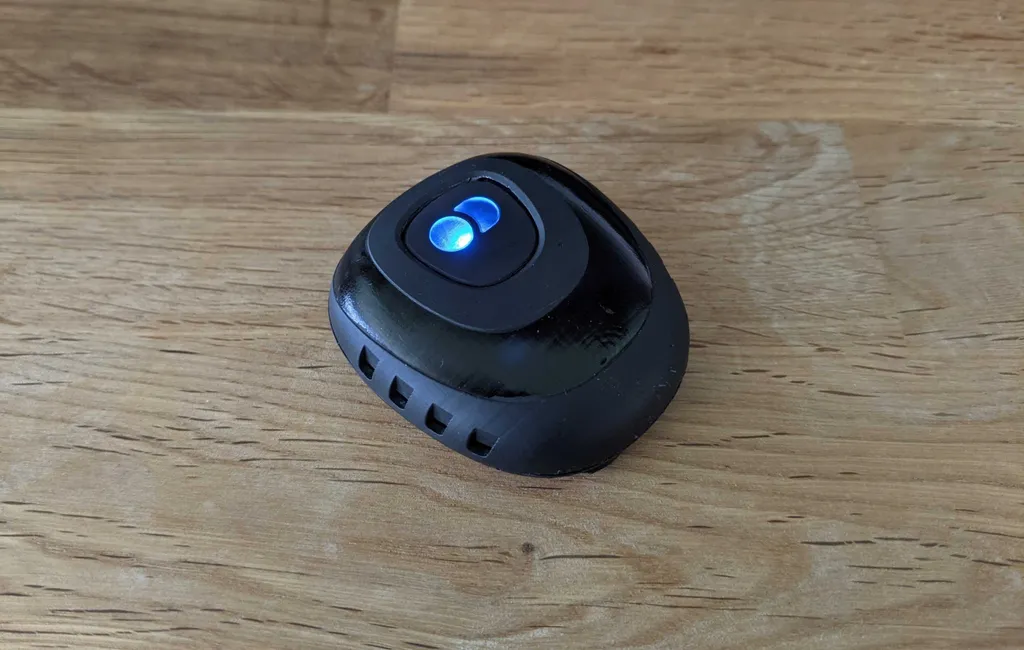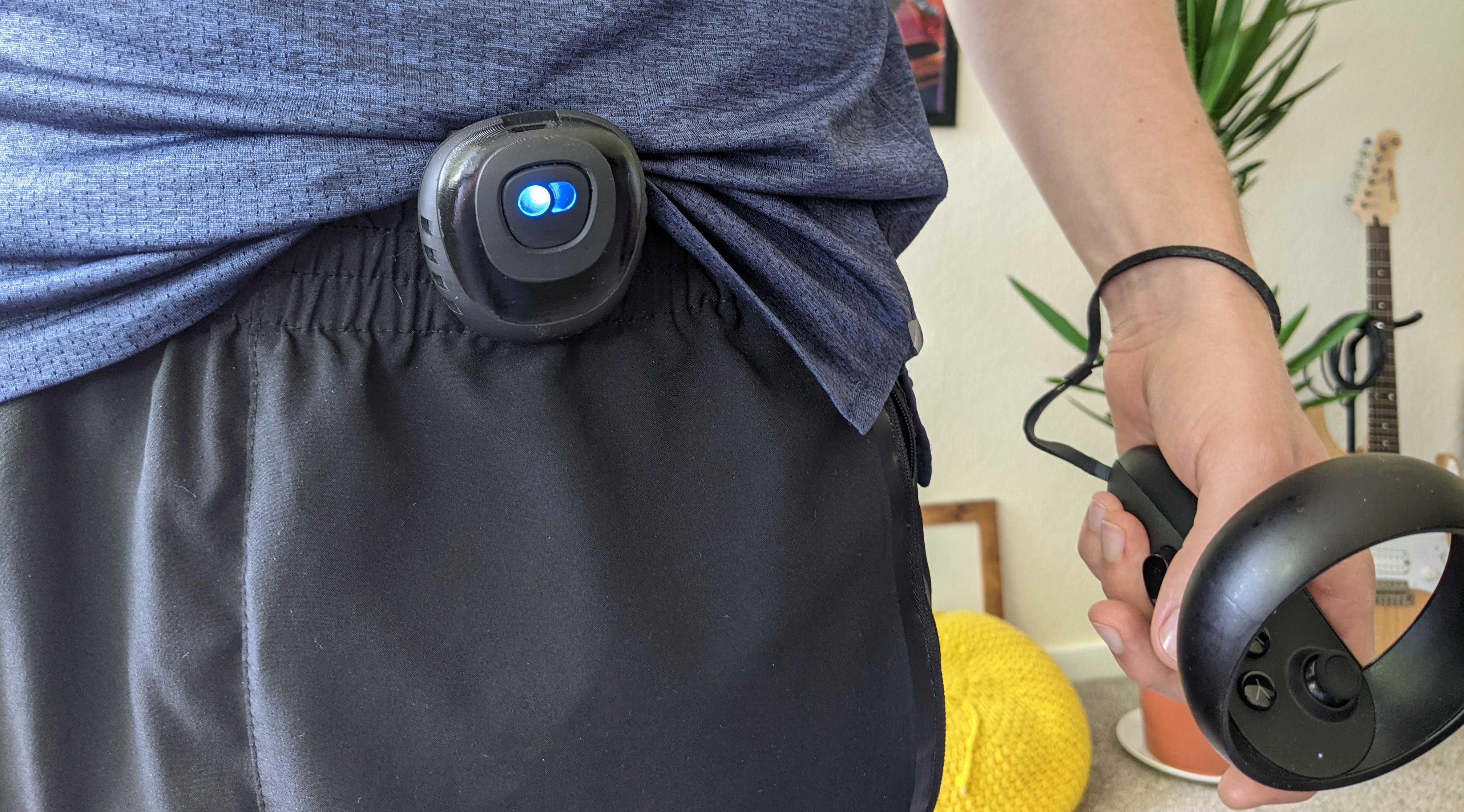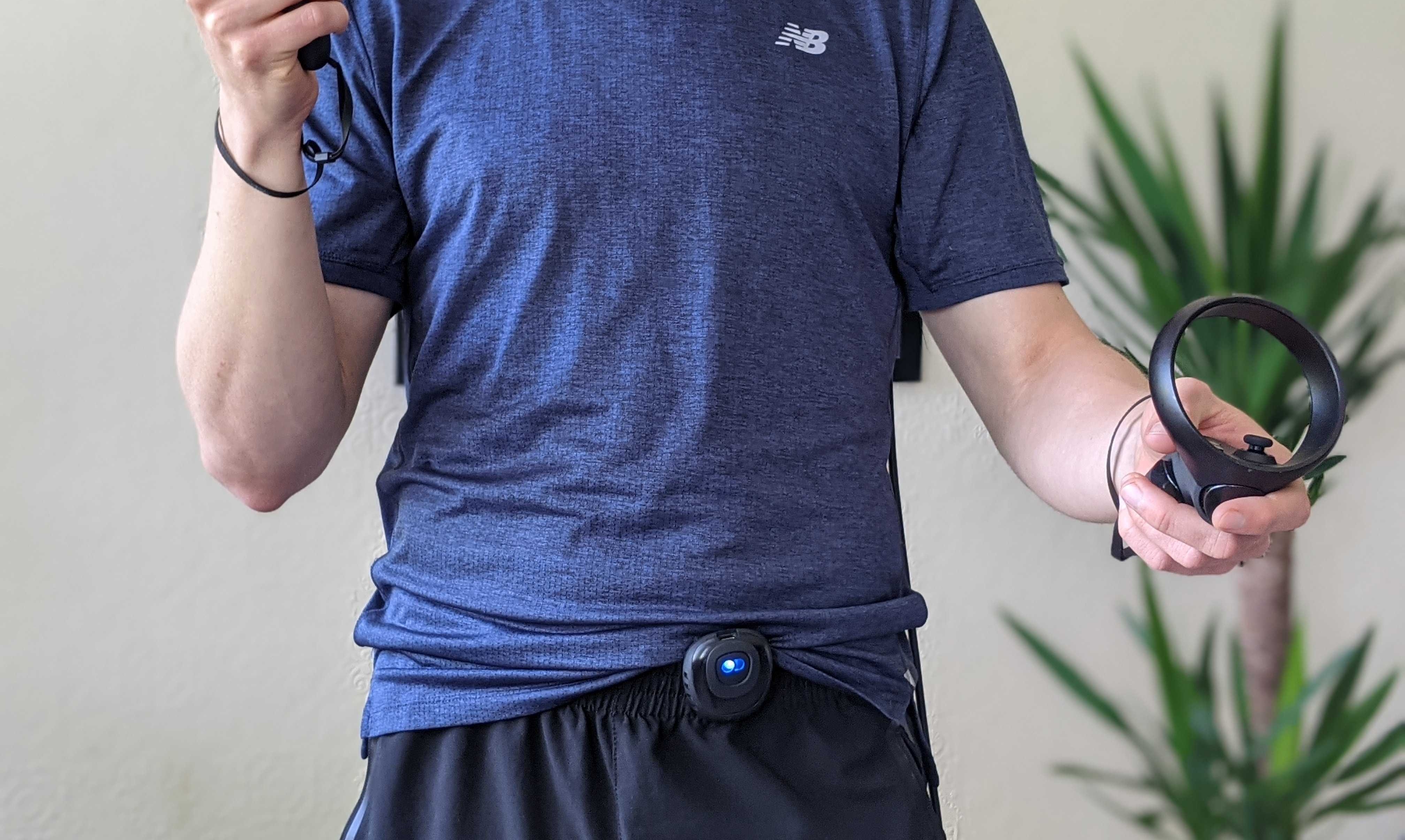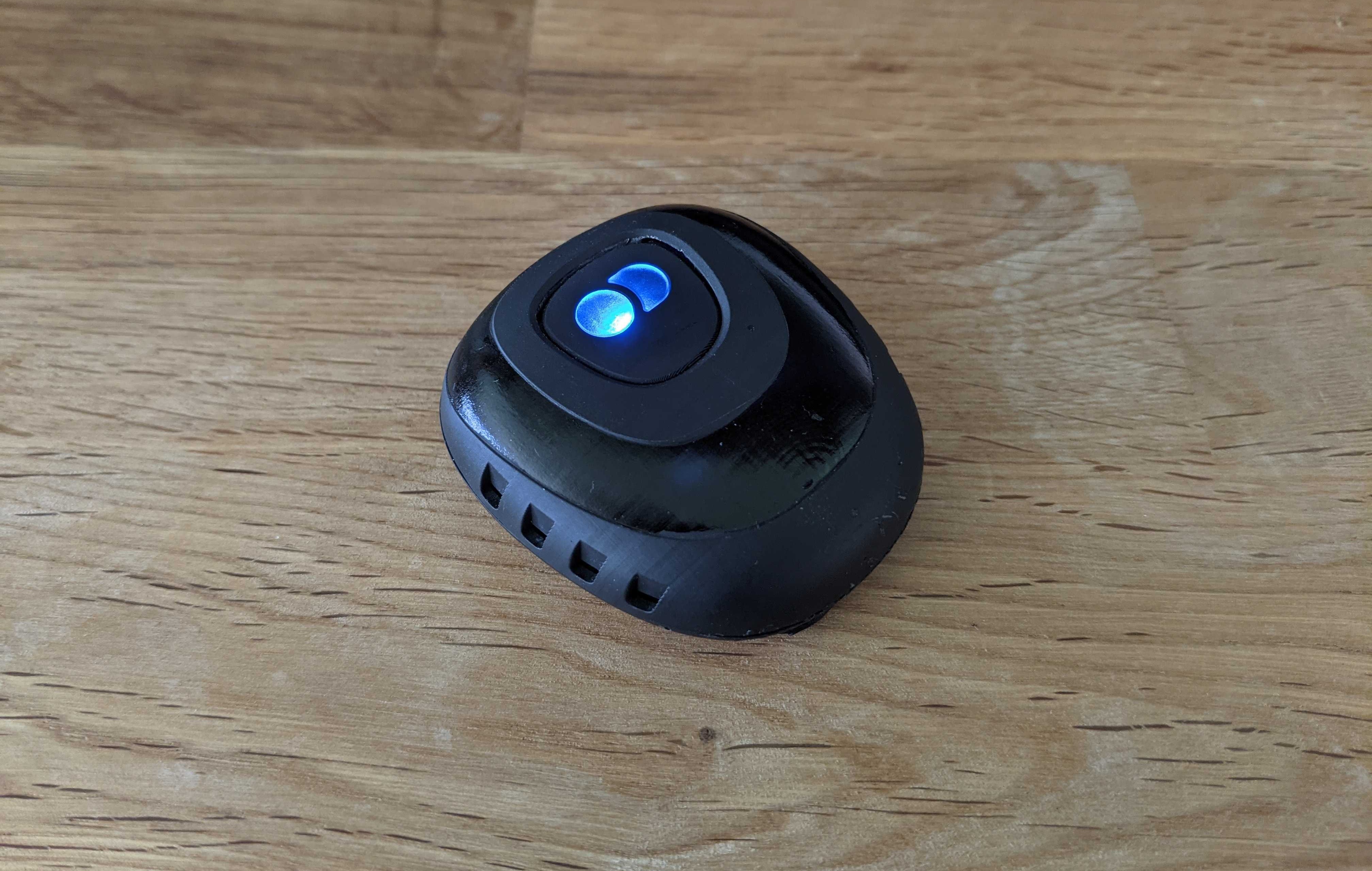We’ve got a first look at the new device from Megadodo Simulation Games. Read on in our early DecaMove review.
Megadodo Simulation Games is a company with a lot to prove. Last year it appeared as if from thin air to announce an ambitious SteamVR headset, touting HP Reverb resolution and a $450 price tag. Naturally, there’s a lot of warranted skepticism about what the company will be able to deliver – this wouldn’t be VR’s first unknown contender to get in over its head with big promises.
The DecaMove is a good, if tiny, first step to suggesting it might — just might — be able to deliver.
Don’t get me wrong, the DecaMove is a much simpler and more manageable product than what’s being proposed with the DeacaGear. We’re also yet to see how Megadodo handles production and shipping after its successful crowdfunding round, so there’s still plenty that could go wrong. But, based on the “Blogger Edition” unit I’ve been using for a few months now, there’s reason to be hopeful.
Note: Megadodo sent UploadVR a ‘Blogger Edition’ of the DecaMove. It’s all pretty much complete but we’re still waiting to see what the final product looks like before we update this to a finished, final review.
Show Me Your Moves
DecaMove is a small device you wear on your hip that determines the direction of movement when using smooth locomotion in certain PC VR games. Traditionally, VR games with smooth locomotion rely on either hand or head direction to determine where you want to move. Neither works great – using your hands might mean sudden, unwelcome changes in direction if you aim at an enemy with a gun, whilst using your head restricts where you can look as you move toward an objective. Even the best implementations often carry a few instances of tying your brain in a knot.
But, by assigning the direction of movement to the tracker sat on your hip, DecaMove does away with much of that awkwardness. When DecaMove is in use, you’ll see a small blue ring outlining where you stand in VR. On that ring is an arrow that corresponds to the way the tracker is facing. Twist your hip to the right, and the arrow will follow. Wherever the arrow is pointing is the direction in which you’ll move. You’re suddenly free to move both your head and hands and carry on walking in the intended direction.
This does wonders for an intense combat experience like Zero Caliber, allowing you to focus that bit more wholly on the action and to move up through the battlefield in a more natural, intuitive fashion. It takes a little getting used to but, once you grasp it, you’re no longer having to coordinate your head or hands to move, you’re just moving.
So while the actual process of smooth locomotion may still not be all that convincing, you are having to think about it that bit less, freeing up a little mental real estate that can be concentrated back on the experience itself. And that’s just in single-player content; for multiplayer shooters (Onward and Pavlov are supported, among others), once mastered, you may be getting a slight edge with the extra freedom you’re afforded. Think of it as a little like two people playing a traditional game with different framerates – the one playing with a higher framerate has a small advantage but not enough to make the experience unwinnable or unfair for others. That’s about what you can expect here.
So, no, it’s not a massive difference when it comes to actually convincing your body you’re navigating virtual space. DecaMove doesn’t solve the problem of immersive VR movement, but key to its appeal is that it’s (mostly) incredibly simple to both setup and wear, meaning there’s very little hassle in enabling that appreciated bump in intuition.
It’s All In The Hips
The Blogger Edition of DecaMove came with a few small parts. There’s the hip tracker itself which, for this unit, is a pretty crude injection mold with a clip to attach to your waist and a USB-C charging port. Then there’s the USB dongle that you plug into your PC and, of course, a charging cable.
Getting DecaMove to work was a very simple process. You’ll first need to install a management platform named DecaHub that will take you through setup – plug the dongle in, hold the power button down for a moment and they should find each other pretty quickly. There is a simple first-time process of moving the device in your hand to calibrate but, other than that, there’s very little friction. Megadodo recommends you boot supported games from DecaHub itself to make sure it’s all correctly registered.
The battery, meanwhile, lasts for about three hours and will charge up incredibly quickly. It all sounds pretty good, right? And it is, though there are just a few issues to talk about.
Supported Games
DecaMove’s website says that the device supports ‘most’ SteamVR games, but that’s speaking a little liberally. An official list of supported games is 30-strong and others are supposed to work without any implementation too but, by Megadodo’s own admission, compatibility seems to range across headsets. The Walking Dead: Saints & Sinners will work on Oculus Quest via Link cable, for example, but won’t work on Rift S. If you have a Windows VR headset you might want to check the list for yourself, as many of the supported titles won’t work on that platform.
Still, small as the official list may be, it includes most of the expected hits. Half-Life: Alyx, Medal of Honor, Skyrim, Gorn and more are all supported, though there seems to be no compatibility with Rec Room and Borderlands 2 VR. If a game you’re particularly keen to use DecaMove with isn’t listed, maybe see if another owner can confirm compatibility before picking one up yourself.
Technical Hitches
Much of my time with DecaMove has been trouble-free, but there have been some sessions where the kit has struggled with a connection. Megadodo recommends plugging the dongle into the front USBs of your PC. When I did this I mostly got a great connection and, if I didn’t, a quick reset seemed to figure things out. If I plugged it into another slot the connection would struggle when I had my back turned to the device. This was true across two PCs I tested on and I also had times where the device didn’t boot up alongside a game, and had to quit the game.
Occasionally the direction of the device will go out of sync and recalibrating requires you to face forwards and hold your hands straight in front of the kit. Sometimes I struggled to get this to pick up and sometimes it wouldn’t stop calibrating when I didn’t need it to, which was irritating, but not fatal by any means.
Early DecaMove Review Final Impressions
DecaMove doesn’t offer a revolution for VR locomotion – it won’t suddenly make VR movement realistic. But, by swapping out using your head and hands for your hip as a directional indicator for smooth locomotion games, this handy little gizmo does break down some of those awkward barriers in smart, mostly seamless ways. A combination of frictionless software that takes moments to setup and the ability to more fully concentrate on what you’re doing in a game rather than how you navigate it around it make it a pretty easy recommendation for PC VR enthusiasts, pending a successful product rollout. Megadodo has started off on the right foot, then; let’s hope the DecaGear delivers too.































